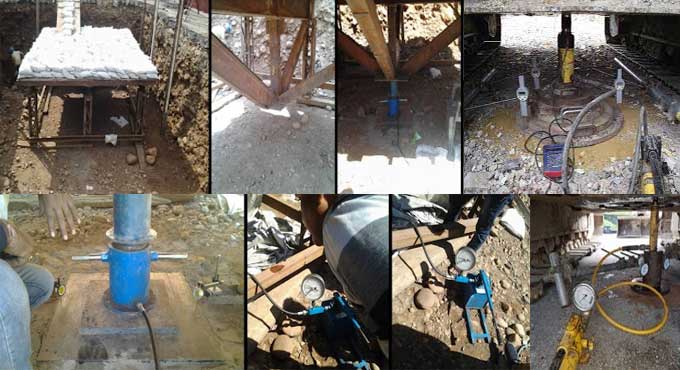
Benefits and Drawbacks of Plate Load Testing at Construction Sites
Plate load tests use to determine the earth's ultimate capacity for bearing load and the likelihood of settlement under a fixed load. Essentially, the test involves rigid plates at the foundation level and measuring settlement based on weight increments.
At what load the plate begins sinking quickly, the ultimate bearing capacity determined. A bearing plate must be square and between 30 cm2 and 75 cm2 in size. Steel plates must have a thickness greater than 25 millimeters.
Components of Plate Load Test
Tests are conducted on the soil to establish its ultimate bearing capacity using plate load tests. There were five components to the plate load test:
- Two rigid square plates measuring 75cmx75cm and 45cmx45cm.
- Loading plate with a hydraulic jack.
- Structural steel joists.
- A dial gauge G1 and a dial gauge G2 are available.
- Each bag weighs about 35 kilograms. About 60 tones of load total.
Workflow of Plate Load Test
- Excavation is done at the site up to the proposed depth of the foundation to 3m.
- It is a square hole or depression whose bottom level corresponds to the level of the actual foundation hole, whose size equals the size of the test plate 75 cm x 75 cm.
- An excavated hole of 75cm x 75cm is located in the pit's center.
- The bearing plate, which is mild steel, should have a minimum thickness of 25 mm used in the test and a maximum thickness of 40 mm. normally, two square rigid plates measuring 75 cm x 75 cm and 45 cm x 45 cm are used in the test. 45 cm by 45 cm plate is positioned above 75 cm by 75 cm plate.
- It constructs over the test plate with a loading platform, and deadweight applies in the form of sandbags about 35 kg in weight. On a steel joist, the bags are completely supported by their weight.
- It consists of loose material and a 75 cm by 75 cm metal plate so that it is in full contact with the subgrade in the test.
- The test plate is loaded using a hydraulic jack. A central column applies a load to the test plate. After the test plate is loaded, it sinks slowly.
- Two dial gauges are fixed diametrically opposite one another, G1 and G2, to measure the plate's level. In dial gauges, the sensitivity is 0.02 mm. The settlement should be observed after five, ten, fifteen, twenty, and sixty tons of loads.
Plate Load Test Result
Based on existing ground levels, a subsurface foundation should have a minimum depth at 3.0 m with a net bearing capacity of 25t/m2.
There is a limit of 30 tons per square meter for the gross bearing capacity.
Benefits of Plate Load Test
Considering both shear failure and settlement, it gives the allowable bearing pressure. As a field test, soil samples are not necessary. Field tests were conducted under identical conditions to the actual conditions in the field.
Drawbacks of Plate Load Test
It is important to note that the test results reflect the behavior of the soil below the plate, not that of actual footings, which are much larger. Short-duration tests are basically what the test is about.
Therefore, it is not a reflection of long-term consolidation settlement of soil and size. Carrying heavy equipment, applying heavy loads, and running tests on a field for several days can be extremely tiring.
Conclusion
Plate load test is to determine the ultimate bearing capacity of the soil or to determine settlement when a load is applied. Soil strata tend to be fairly uniform if stresses do not penetrate deeply enough. That can be verified by sounding or boring.
To get more details, watch the following video tutorial.
Video Source: Proud to be a Civil Engineer


